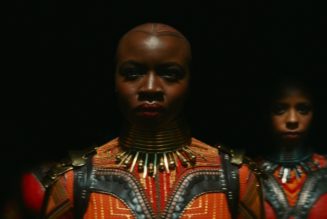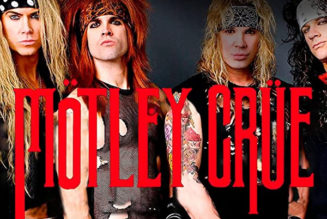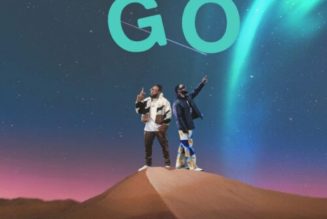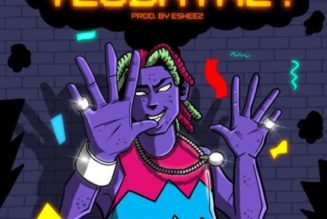
Technological advancements have opened up new ways for artists to connect with their fans through music releases.
Last week, Kanye West unveiled his highly-anticipated Donda 2, forgoing a traditional drop on streaming services and opting instead to release the studio album exclusively through his Stem Player hardware device. Though the rapper was reportedly offered $100 million USD to make the album an Apple Music exclusive, the 16-track LP is only available on the hockey puck-shaped device, developed by his brand Yeezy Tech and shipped out with the original Donda album pre-downloaded.
Despite its $200 USD price tag, the rapper’s community has seemingly embraced the quirky new device. In the first 24 hours following the debut of Donda 2, over 8,000 Stem Players had been sold, according to West himself, equating to approximately $2.2 million USD in sales. The appeal of the small, sonic device lays in its ability to allow listeners to add effects, isolate song sections, split files into “stems” to control vocals, drums, bass and samples, and essentially become collaborators in the dynamic album-making process.
Mathias Rosenqvist, CEO of Sweden-based sound technology company Moodelizer, offered some insight into the changing world of music releases and said that while “streaming is static” and traditionally “offers no interactivity between the artist and fanbase,” West’s device has tapped into a form of modern music technology called reactive music.
“Reactive music is a patented proprietary format that takes the ability to control music in real-time to the next level,” Rosenqvist explained. “It combines the power of stems with an added dimension of creative control for both the user and the creator of the music itself.”
Social media platforms, particularly TikTok and Instagram, have also found new ways for fans and digital content creators to try out sound engineering. By producing directly into a reactive format, a song is “opened up” for remixing so that anyone can readily explore and edit it. And when snippets of music are used in video content, consumers can discover songs they’ve likely never heard and artists receive organic exposure to previously unexplored audiences.
Other artists, like Deadmau5, Grimes, 3Lau, Jacques Greene and Kings of Leon, are working around traditional streaming models by releasing their music as NFTs – whether through auctioning off unreleased singles or releasing entire albums on the blockchain. NFTs, or non-fungible tokens, provide proof of ownership over a particular digital asset, giving owners of music NFTs a larger stake in distribution and use. Whether or not to upload a track to a streaming service, share it with the artist’s larger community, or even sell it for commercial use, is often left up to the owner of the NFT. In addition to proceeds from auction sales, artists will sometimes receive a royalty each time an NFT resale occurs.
“Music NFTs enable artists to explore an additional direct-to-fan revenue stream that can be highly lucrative,” said Bryce Carr, director of partnerships at social token and NFT platform Rally. “From the fan perspective, scarcity of ownership and understanding that you are directly supporting the artist is desirable.”
Whereas streaming services pay artists extremely small amounts for their music – typically a fraction of a cent per stream – Carr points out that “NFTs provide an opportunity for artists to monetize from their fans even if they are not receiving the majority share of streaming revenue.”
Depending on the particular terms of an NFT platform and recording deals in place, Carr said oftentimes “sales revenue can be direct to the artist,” yielding a larger opportunity for musicians to monetize their fanbases.
He cited Steve Aoki as an example of an artist who has capitalized off of the NFT boom to launch his own token system and metaverse fan community. Within the AOK1VERSE, fans referred to as “passport-holders” can redeem crypto tokens for virtual performances, live concert tickets, apparel, digital wearables and NFTs. Speaking on the popularity of his virtual community, Aoki revealed that he had made more money from NFT sales than he has from music royalties across the six albums he’s released over the past 10 years.
Artists have also begun to tap into virtual reality to create more immersive and interactive streaming experiences. While the VR industry has been steadily expanding since around 2010, marked by the release of the prototypal Oculus Rift VR headset, developments made in the latter half of the decade have enabled artists to pair music releases with hyper-realistic virtual environments. In 2015, The Weeknd remixed his hit song “The Hills” with a guest verse from Eminem and paired it with a VR music video. DJ Marshmello has also released several VR experiences to go along with his dance tracks, and the English band Gorillaz broke YouTube’s record for the biggest debut of a VR video in 2017 with their “Saturn Barnz” visual, clocking more than three million interactions in its first 48 hours.
Icelandic musician Björk even put out an entire “VR album,” entitled Vulnicura, via Steam. Although the static listening component of the project arrived on streaming services in 2015, Björk continued to film dynamic 360-degree music videos for each Vulnicura single over the ensuing five years, completing the LP in 2019.
As these technologies continue to develop, they reflect unique opportunities for direct engagement between fans and artists, as well as new streams of revenue. Still, as more artists turn to these alternative means of putting out music, particularly NFTs, Carr warned that the novelty of the format may diminish and that artists should continuously prioritize their fanbases above the current hype. “At the end of the day, most NFT music projects need to be thoughtful and serve a purpose in order to appeal to existing fans and consumers engaged in music discovery.”










Tagged: entertainment blog, FEATURES, music, music blog